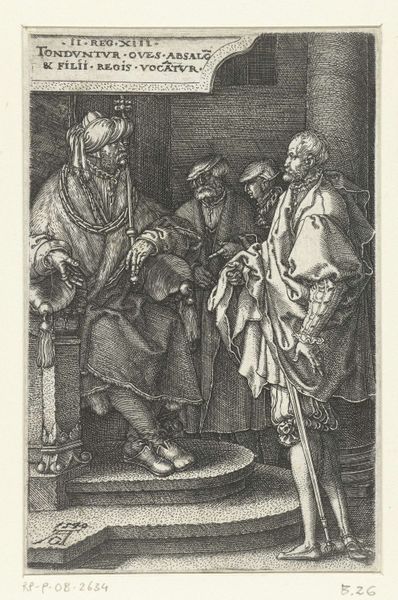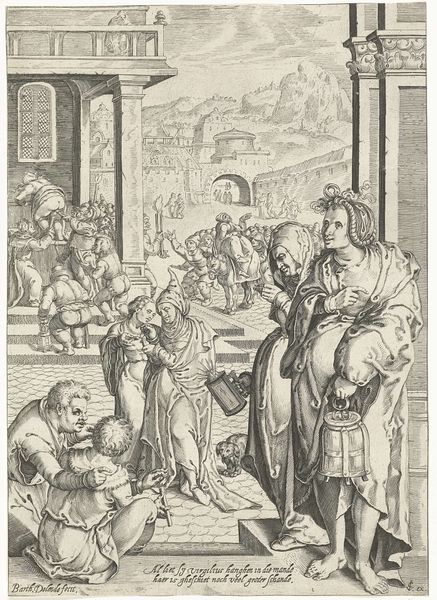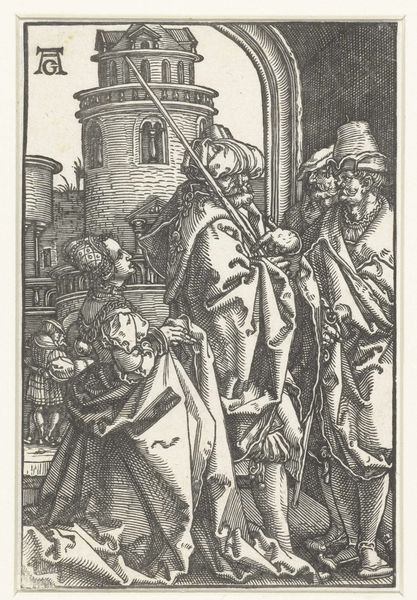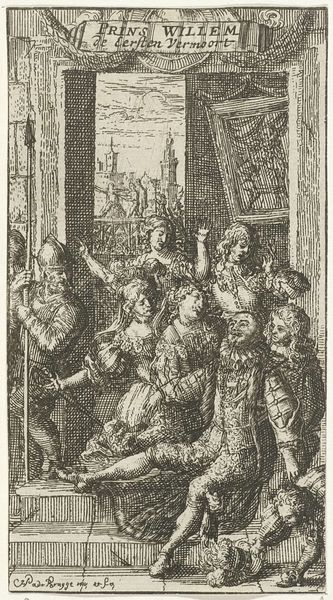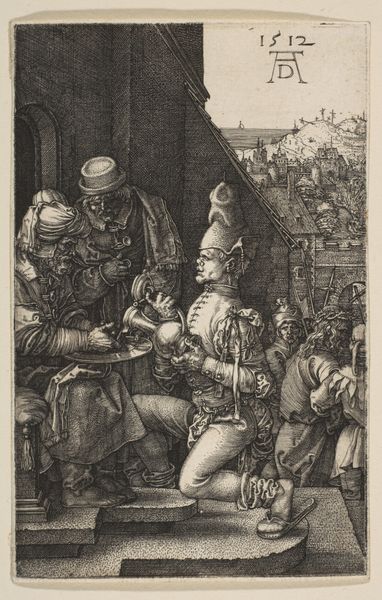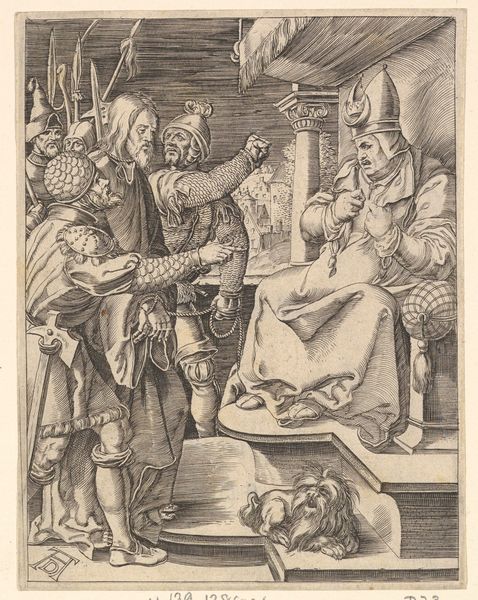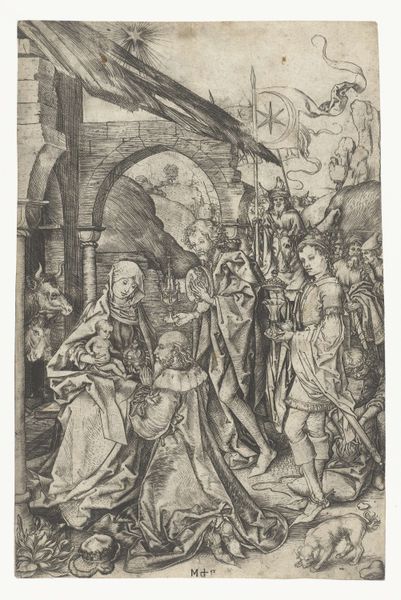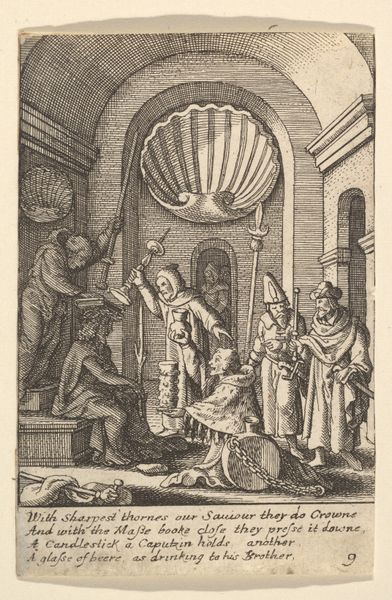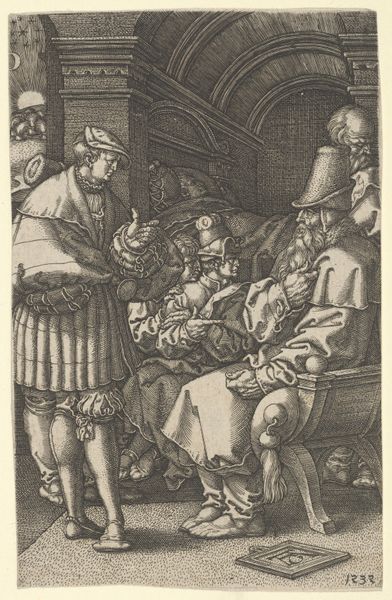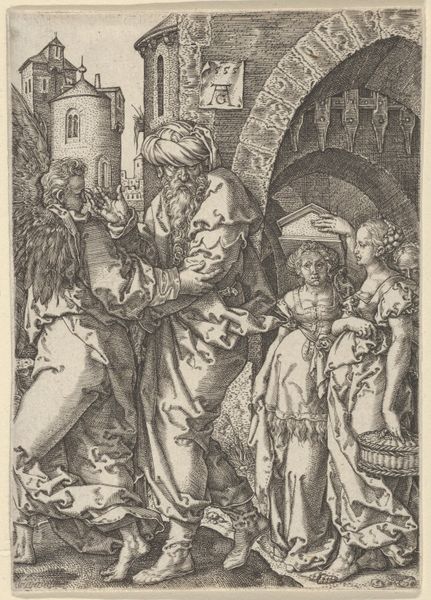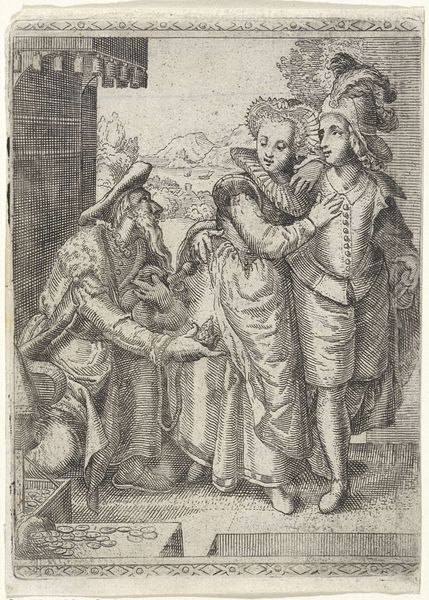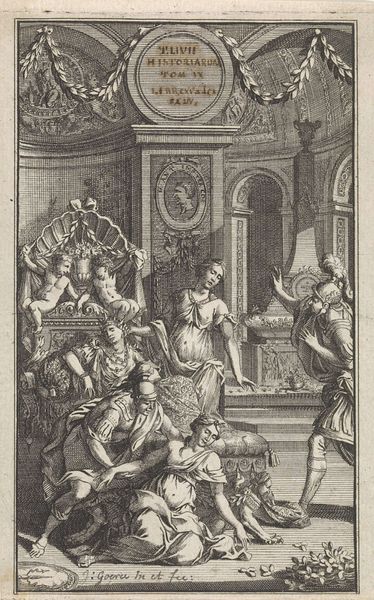
print, engraving
#
narrative-art
# print
#
pen illustration
#
pen sketch
#
figuration
#
history-painting
#
northern-renaissance
#
engraving
Dimensions: height 118 mm, width 84 mm
Copyright: Rijks Museum: Open Domain
Heinrich Aldegrever created this intricate engraving, “The Prodigal Son Demanding His Inheritance,” now at the Rijksmuseum, using only lines to create tone, texture and volume. The composition is tightly arranged, emphasizing the moment of transaction. A group of figures are set in an architectural space, with a cityscape visible in the background. Notice how Aldegrever uses dense, parallel lines to model forms and create shadows, particularly in the clothing and faces of the figures. This technique, known as hatching, is used to define the three-dimensional structure of the objects and figures within the scene. The direction and density of the lines vary to suggest different textures, from the soft folds of fabric to the hard surfaces of the architecture. Aldegrever’s work reflects the influence of the Protestant Reformation. The engraving can be seen as a commentary on economic and moral issues of the time. It doesn't give us a single moral reading. The artist uses the formal elements to express a certain skepticism. The dense, detailed linework encourages a careful, analytical reading, inviting us to reflect on the complexities of wealth, poverty, and social responsibility.
Comments
No comments
Be the first to comment and join the conversation on the ultimate creative platform.
